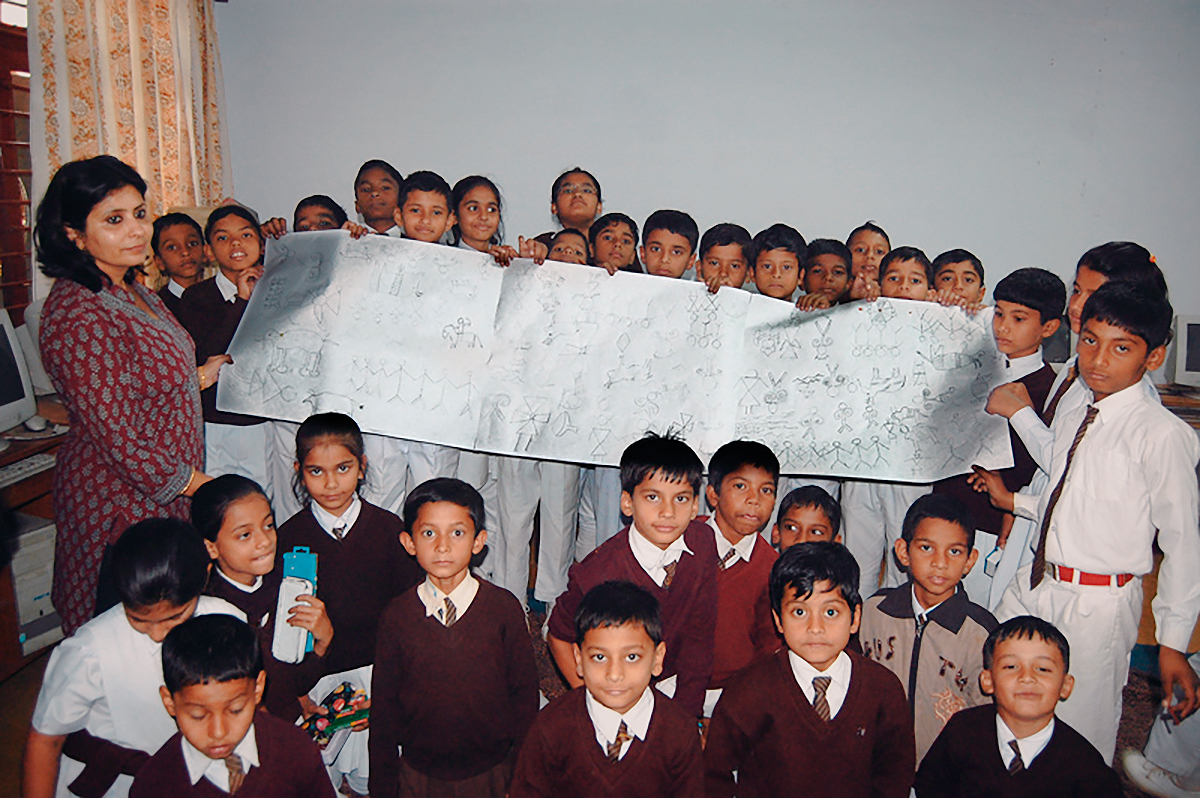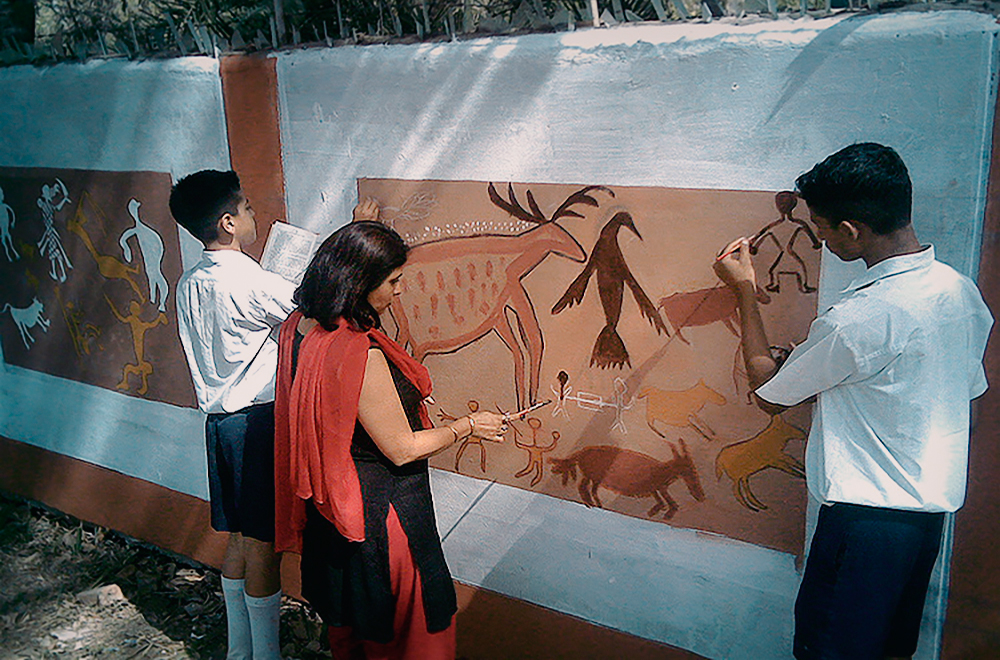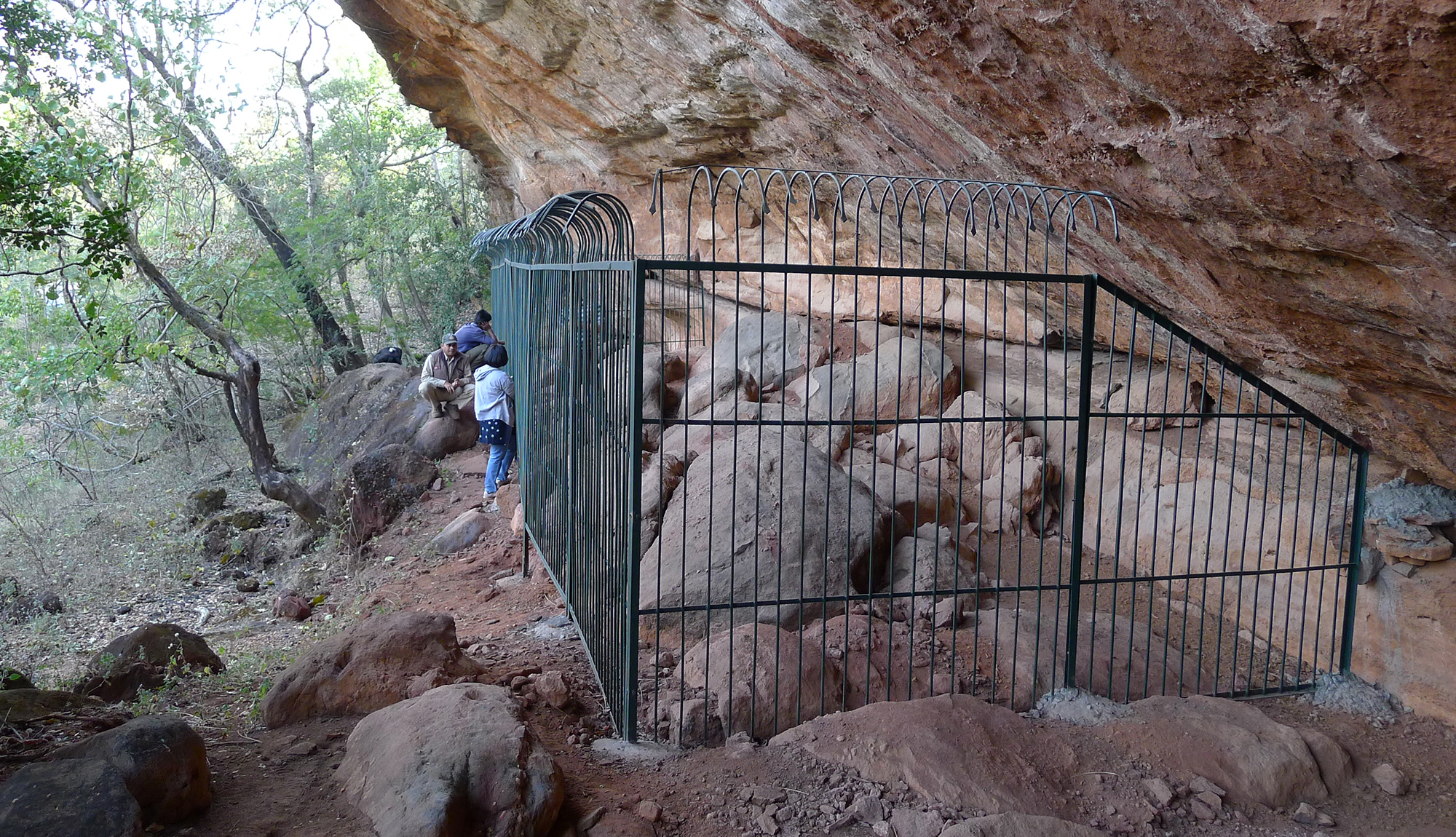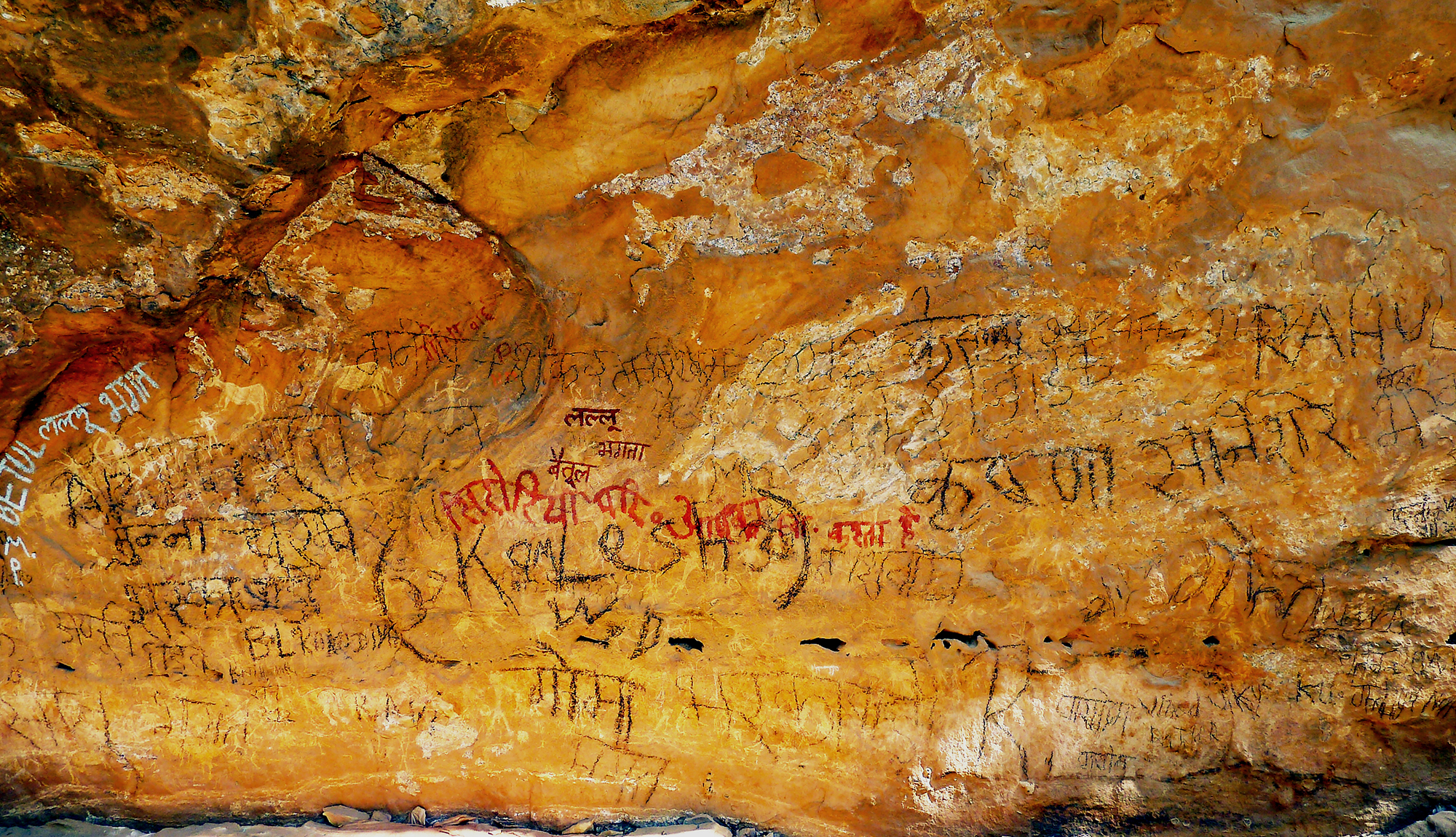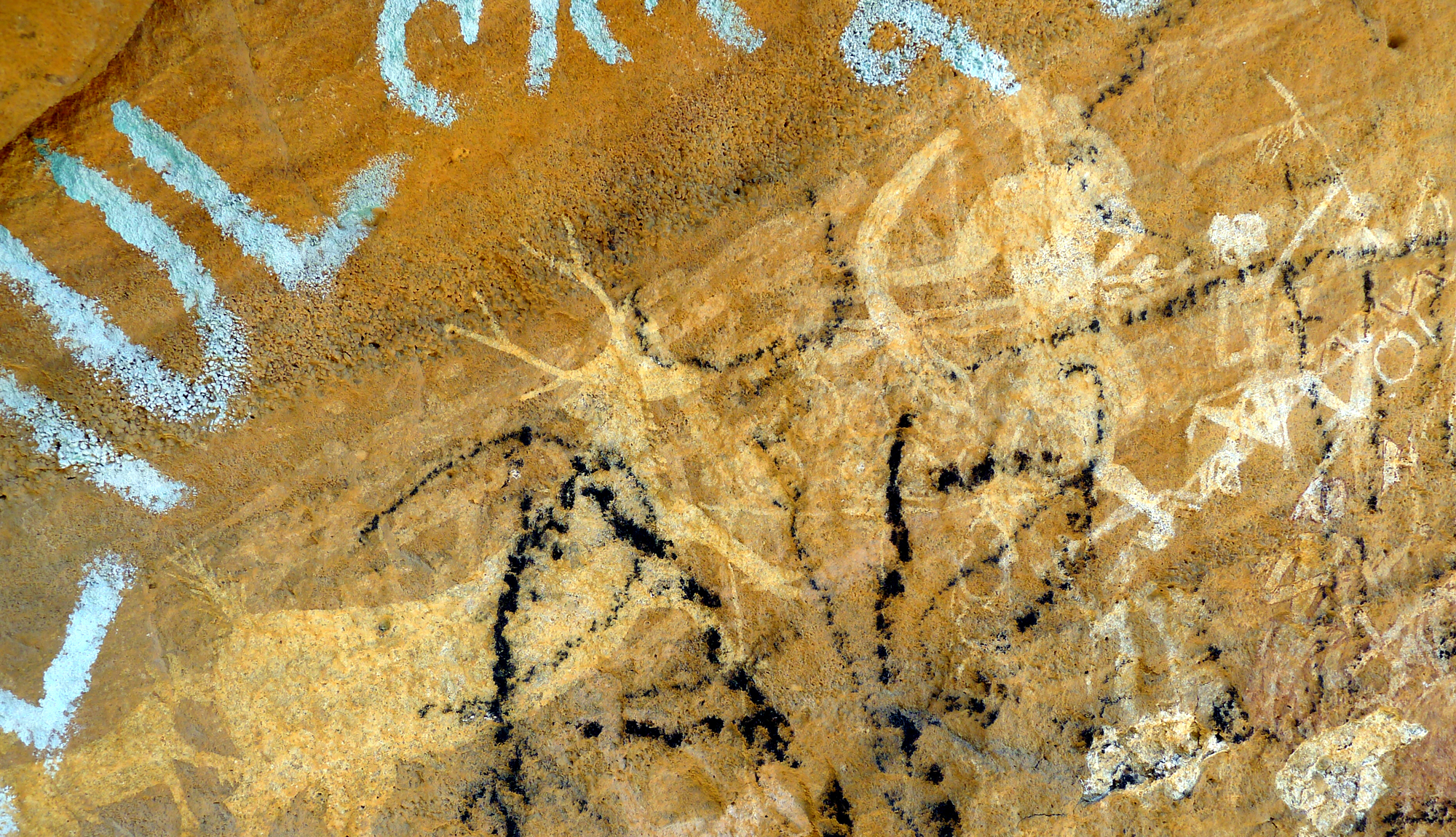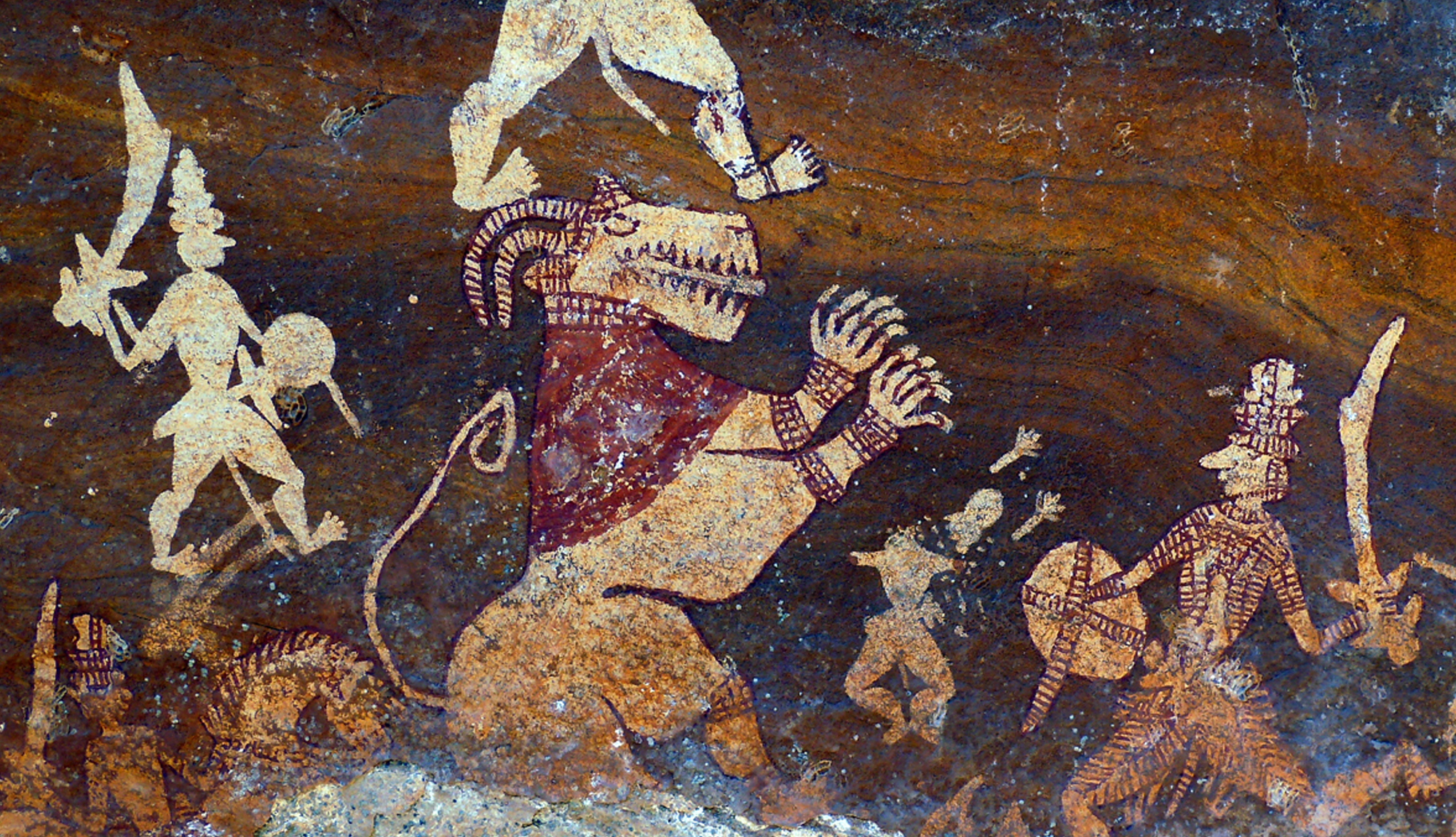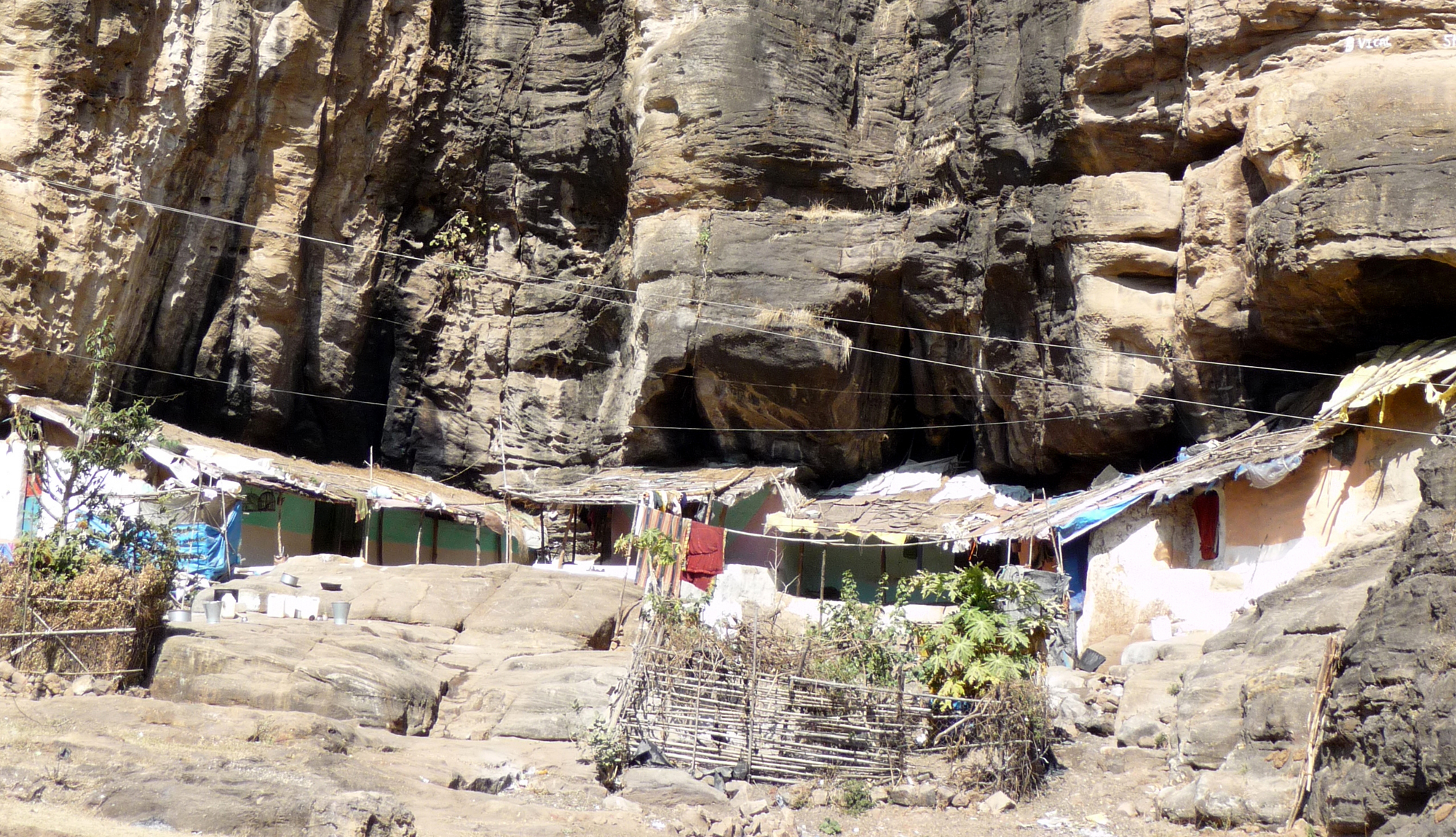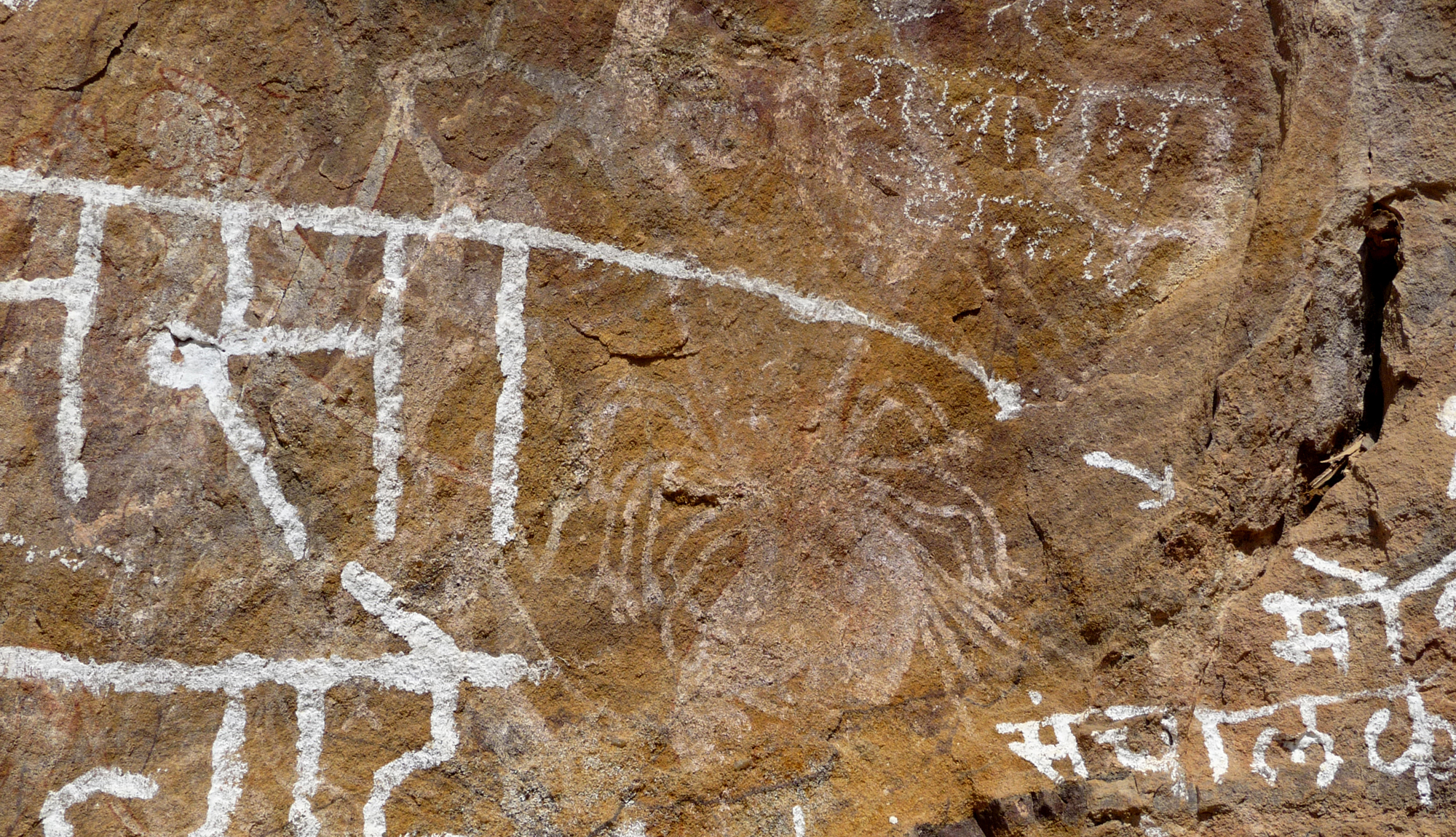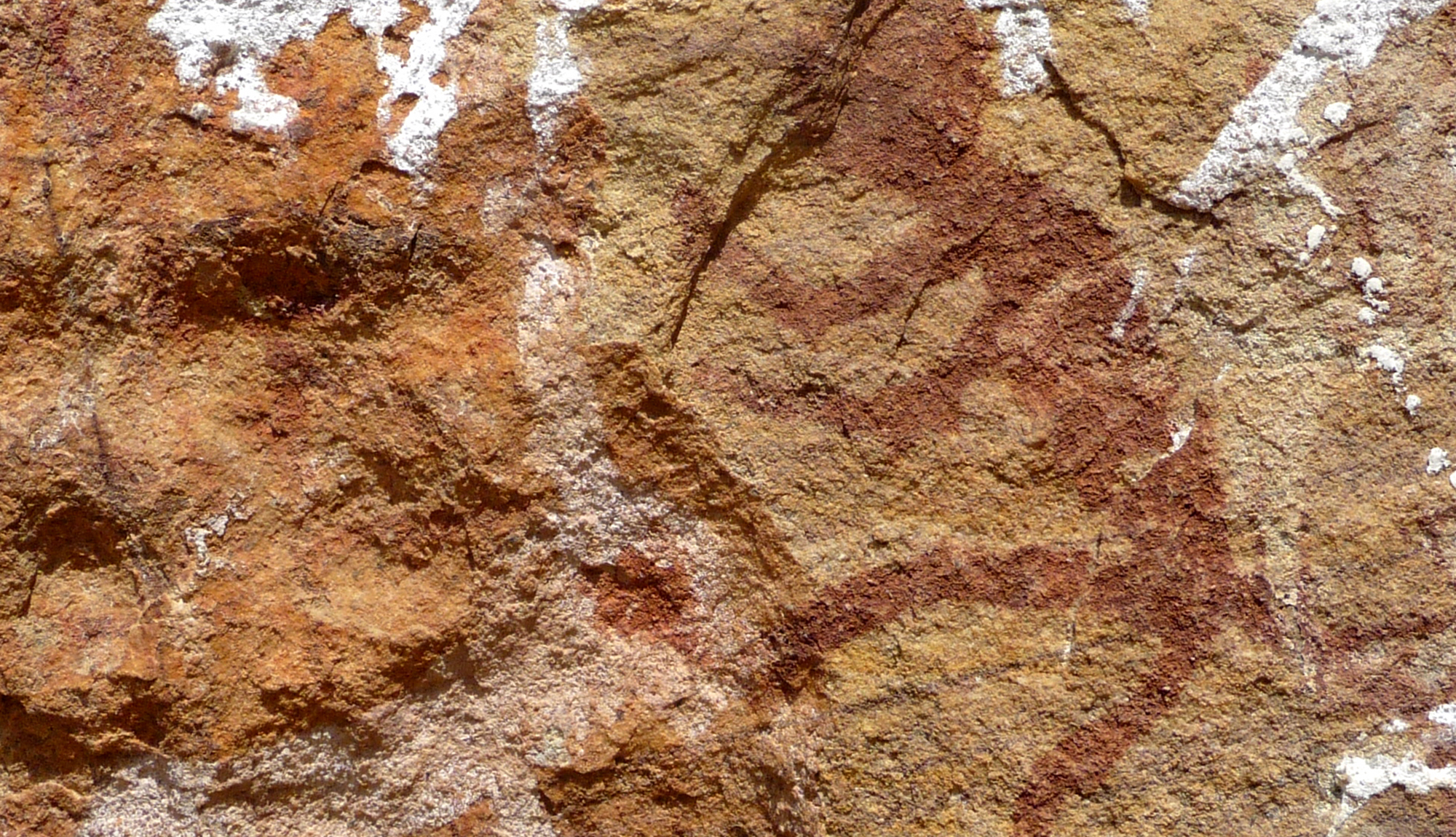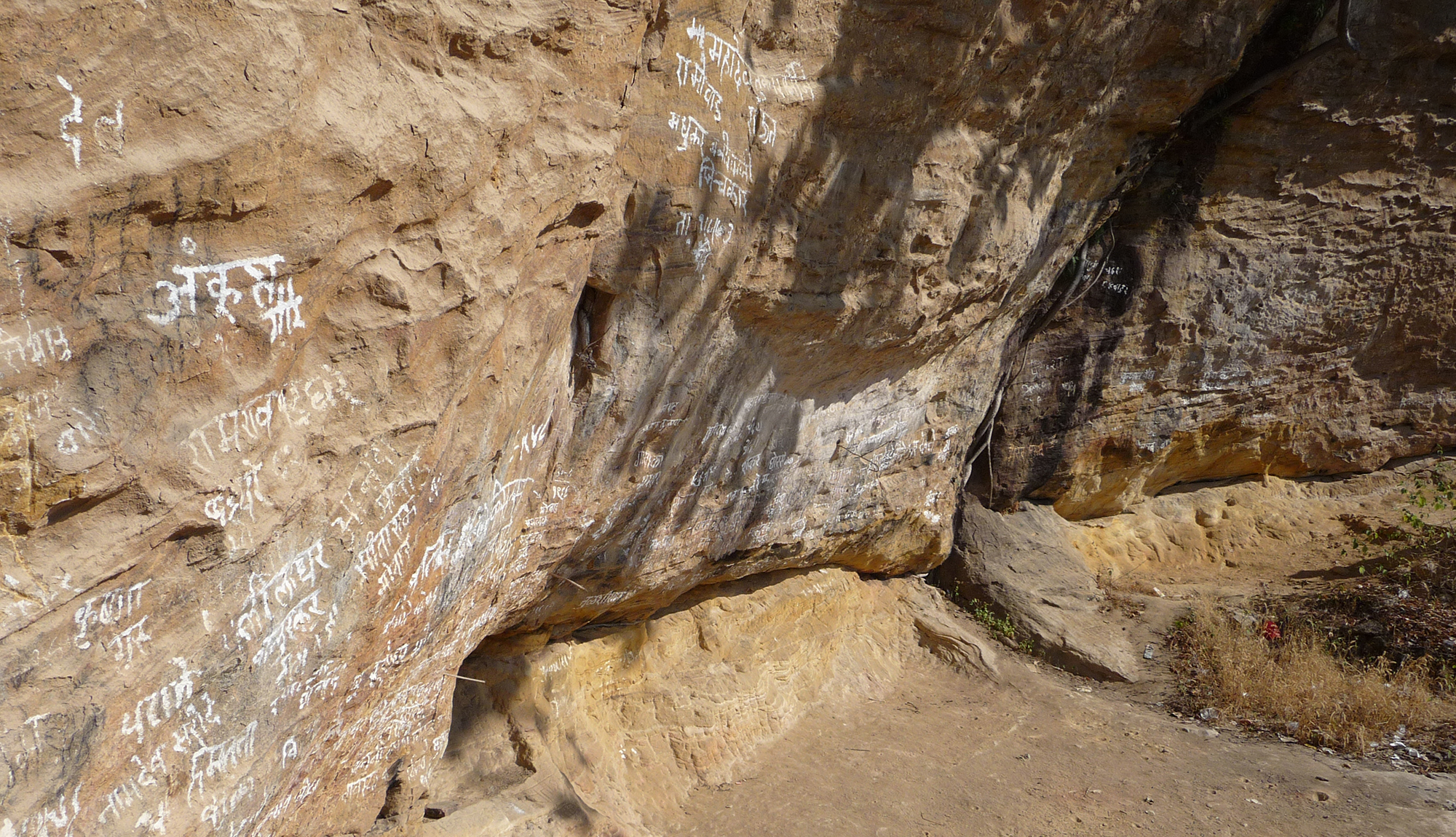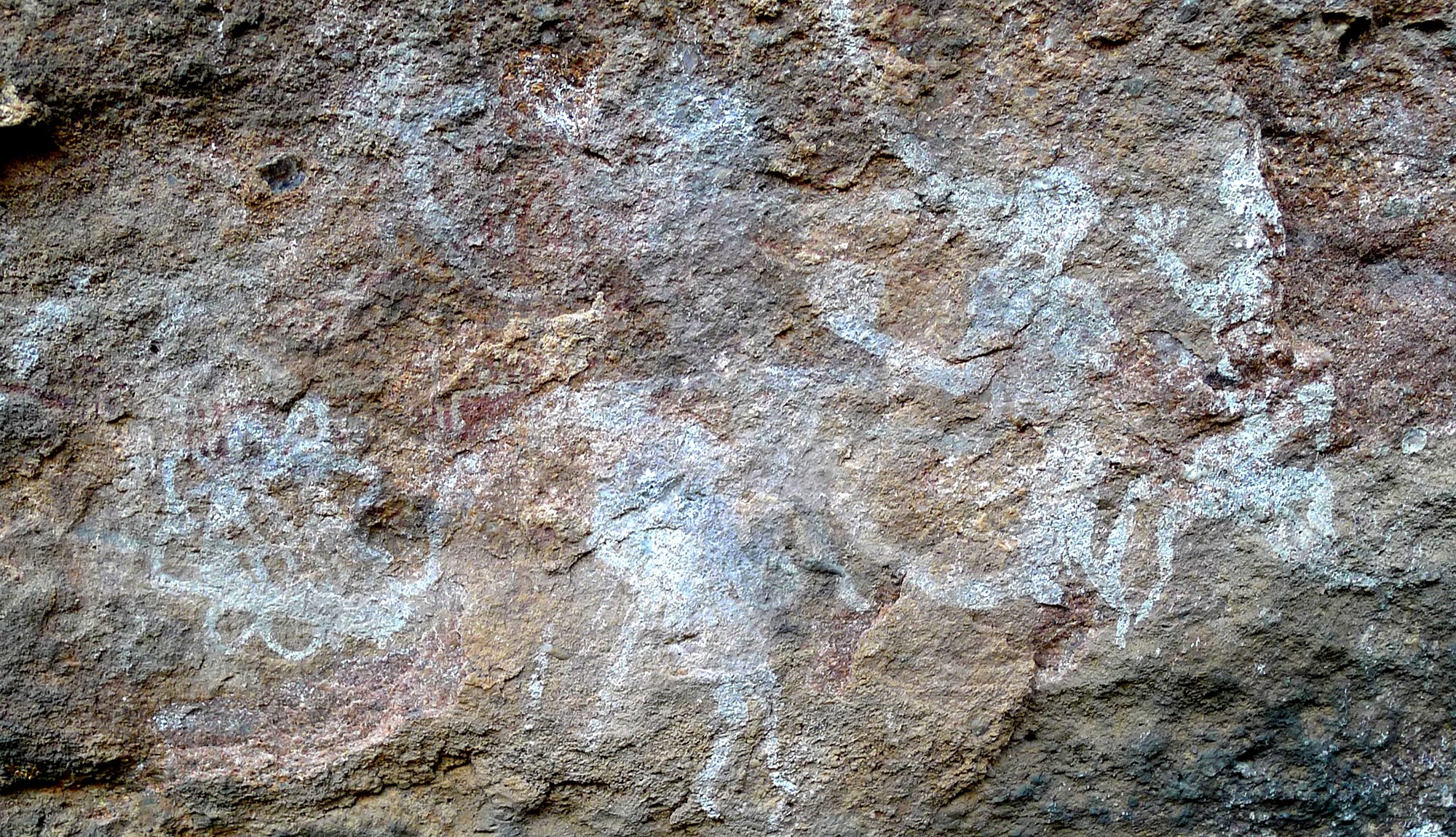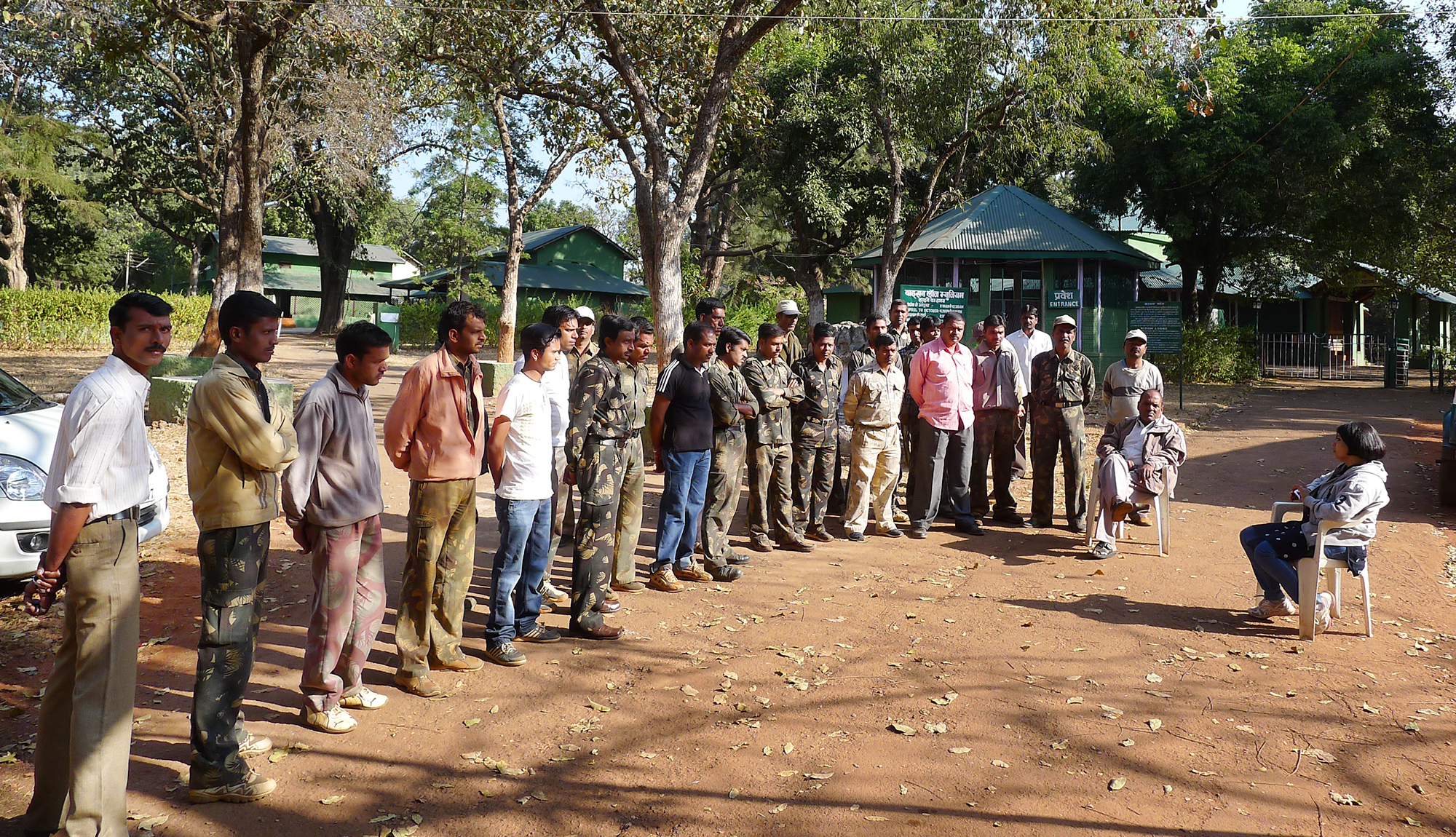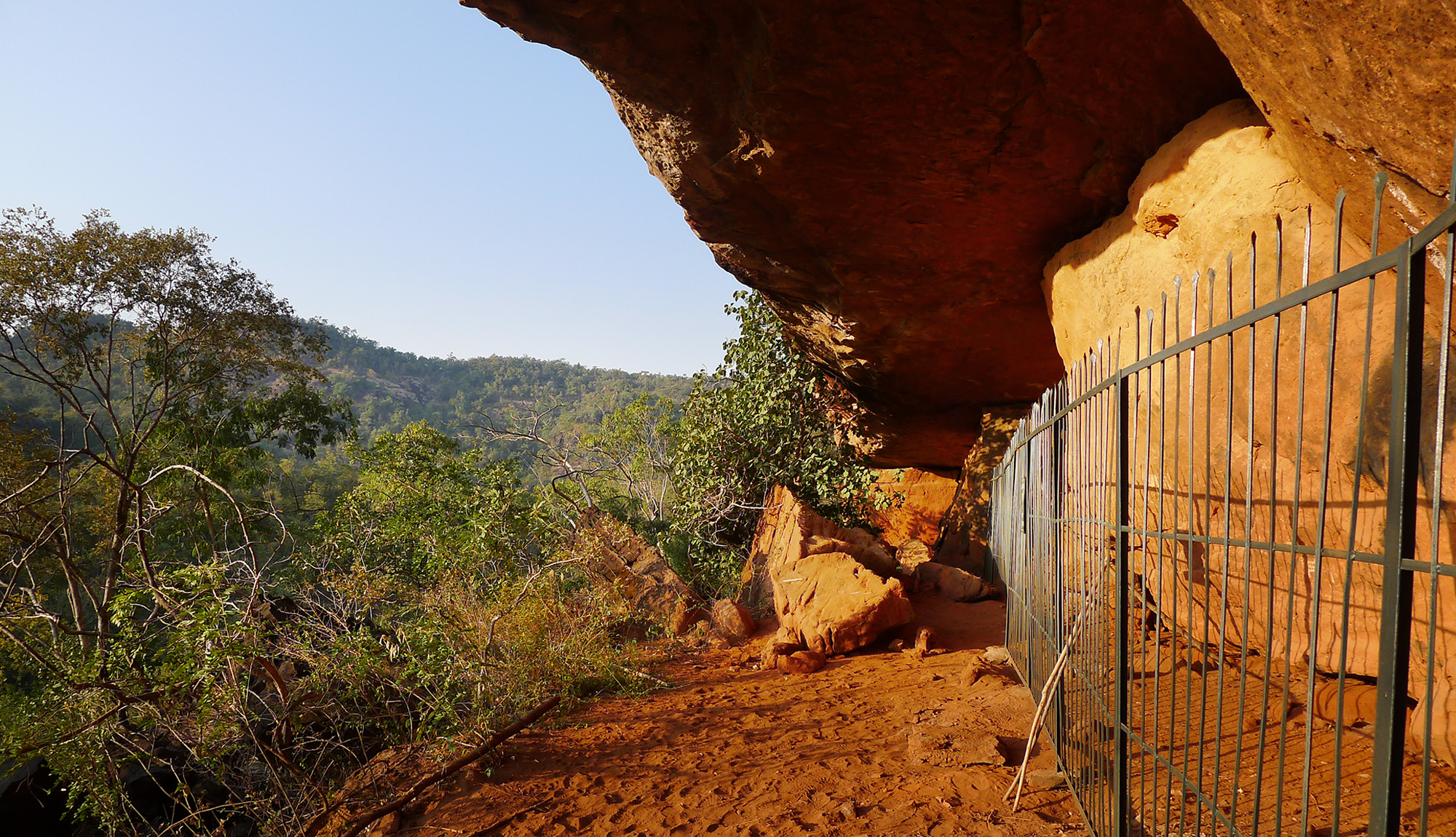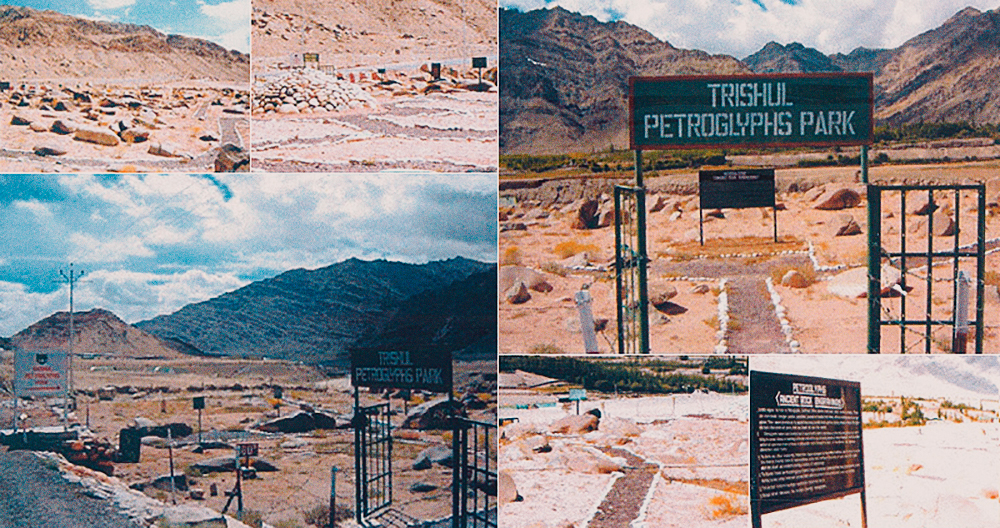


Her art and painting techniques now form the basis of rock art workshops, aimed at educating the young on the cultural and artistic legacy of India. A 'hands-on' approach to ancient rock art conveys the ancient and tribal myths, the themes and the techniques employed. In this way, her workshops inform her students of the importance of preservation of both an ancient and a living culture.
Dr. Meenakshi Dubey Pathak is a member of the Rock Art Society of India (RASI), the Indian Society of Prehistory and Quaternary Studies, the Australian Rock Art Research Association (AURA), Australia and a member of the Rock Art Network.
Dr. Dubey Pathak's extensive research not only brings to light the prehistoric rock art of India but it also highlights the drastic need for its preservation: "This wonderful and precious cultural heritage of ours is facing the danger of extinction by the unaware and uncivilized human beings and their vandalism. The agencies at work must put in a concerted effort to educate the people including the local tribes about the importance of these painted rock shelters and take steps to preserve them before its too late."
Dr Meenakshi Dubey Pathak worked to protect the wonderful petroglyph site at Karu in 2002. About 30kms from Leh on Leh-Manali road, it is located between the roadside and the right bank of the Indus River near an establishment of the Indian Army. The site extends from the road to the riverbank and consists of about 45 boulders, small and large bearing a variety of petroglyphs apparentl belonging to various periods. The scenes primarily depict hunting, hand impressions and animals. A boulder on the bank of the river bears two Ibex calves in playful action very rhythmically engraved. The site has been protected and developed as a tourist spot by the Indian Army and named 'Trishul Petroglyph Site'.
